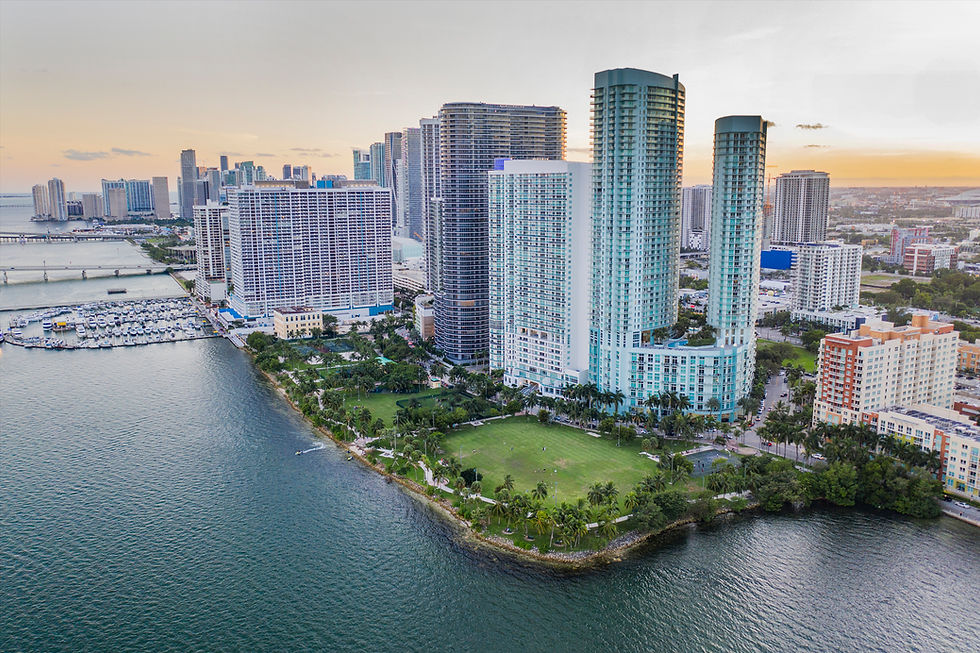An Architectural Design Approach to Climate Adaptation - Part 5 - What defines A Community?
- Aaron DeMayo
- Feb 19, 2020
- 4 min read
Updated: Feb 26, 2020
A Hyper-Connected Planet
Climate Change is a global issue that knows no boundaries on a map, and from which no one is isolated from the effects. Change must occur at a multiplicity of scales. From the individual property to the block, the neighborhood, city, county, state, country, we are all interconnected on a single planet. In today's hyper-connected digital world, those links are greater than ever before, yet keeping that perspective can be a challenge.

As proposals to protect people emerge, the boundaries on maps are becoming blurred. For instance, on behalf of the City of Miami, CDM Smith is designing the Storm Water Master Plan. They have been mapping the existing infrastructure, from drains to pipes to outfalls and everything in between. As this occurs, they have found portions of the physical system that move cross city borders. Natural topographical features cause water to move across map borders as well. Our community is not defined by lines on a map.

Literal Fortification
In medieval times communities constructed a castle, with walls, gates, moats, and turrets, that encircle the city, as a means of literal fortification, protecting all the members no matter the street sweeper or the royalty because everyone was necessary for the city to function.

The Vulnerable
As we consider options and very difficult decisions, there will be areas where people may need to retreat, leaving their homes. These conversations are already occurring, and people are already leaving. Ironically, the most at-risk areas are both the lowest topographically on the water's edge and those on higher ground along our ridge where development will need to occur.
Resident, Business, & Investor Confidence
If portions of our city are chosen for retreat, how we handle the buyouts of properties or allow market forces to evolve, will play an important factor in the future of our community. As the first group of properties that need to adapt or retreat begins to make decisions, the other communities with similar situations will be closely watching, and determining, if those people saw a level of understanding and inclusivity, or a go it alone declaration. The method for determining which streets and seawalls receive capital improvements and adaptations, and which buyouts occur, will be scrutinized. The confidence or lack thereof, of residents on the community's ability to adapt, will play a large part in their decisions to either remain in place, continue to invest by paying their mortgages and paying into funds to adapt, or to sell and leave. Those residents may choose to stay within the South Florida community, or, may move farther to a location where they feel safer and assured. If this process is well thought out and reasonable, it will signal that we have a holistic plan, and the greater good of our people at the forefront of decision making, on the contrary, if not handled well, a snowball effect may occur with people rushing to cash out and leave.
Figurative Fortification
As residents of higher ground feel the squeeze of development around them, how we address the need for affordable housing and job creation will show what we value as a community. If we allow vulnerable parts of our community to be left out, it will leave behind an important part of the culture of our people, and be a stain on our future. Literal Fortification, like the walls of medieval times, will not be able to protect everyone. We have a huge opportunity through figurative fortification, the ability to form policies and actions to shape our environment so we may live to our full potential.

Tropical Metropolis
Our city's natural beauty allows for a very high quality of life. The Magic City is in the spotlight, and our population continues to rise, drawing people from around the U.S. and the world. We have the third-largest skyline in the U.S., and yet also a sprawling traffic-filled city, we have some of the most luxurious residences in the world a few blocks from people who are struggling, and we have some of the highest levels of apartment construction yet also the highest level of cost-burdened renters when adjusting for income.
As the city has grown, we have generated more revenue, how and where we reinvest will largely determine the following chapters of our history. Those decisions have the opportunity to not only bring our Quality of Life Indicators back to the status quo but to elevate them to where we would like to be in the future. Those decisions will determine our future population, visitors, and job growth, all necessary to continue to generate the revenue needed to build the infrastructure necessary to accommodate our population, while also protecting us from climate forces. We can find opportunities to accommodate the changes that are occurring and create an environment that allows our people and nature to flourish.

Accelerating the Pace and Scale of Adaptation
Our community is defined by our people. Creating literal and figurative fortifications to protect and provide prosperity is within our abilities.
In the face of these challenges, policymakers and business leaders will need to put in place the right tools, analytics, processes, and governance to properly assess climate risk, adapt to risk that is locked in, and decarbonize to reduce the further buildup of risk. The cities that act the most expeditiously and judiciously, will have the greatest chance for success.



Comments